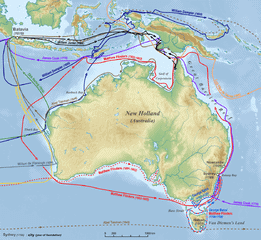The study, led by University of Melbourne researchers and published on Monday, July 11, in theJournal of Climate, is the most comprehensive, long-term temperature reconstruction for Australia, New Zealand and the Pacific Islands region.
It shows that anthropogenic greenhouse gases are required to produce the rate and magnitude of post-1950 warming observed in the Australasian region, strongly pointing towards human influence in rising temperatures.
Climate scientists used natural climate indicators, such as tree rings, corals and cave records, in conjunction with climate modeling to delve a thousand years back into the region’s temperature history.
“We found that the nature of warming experienced in Australasia since 1985-2014 is unusual in the context of the last thousand years,” said lead researcher Dr Joelle Gergis.
“Analysis of climate model simulations shows that the warming experienced since 1950 cannot be explained by natural factors alone, highlighting the role of human caused greenhouse gases in the recent warming of the region.”
The manuscript was originally published online in the Journal of Climate in 2012, but was withdrawn by the authors before full publication after noticing a minor inconsistency between the description of the methods and the data analysis conducted.
Over the past four years, the research team repeated the original analysis and expanded the study to include three new statistical methods to assess the influence of different analysis techniques on the original results.
The key finding from the expanded analyses is that the most recent 1985-2014 period is unusual in the context of the past 1000 years (90 per cent confidence based on 12,000 reconstructions calculated using four independent statistical methods and three different data subsets).
“The fundamental conclusion of the original paper remains unchanged – recent warming in our region is unusual in the context of the past 1000 years, but we’ve improved our uncertainty estimates,” Dr Gergis said.
“The study has been externally reviewed by nine independent assessors. We’ve done our best to be as robust as possible about the science that underpins our findings.”
Analysis based on the smallest subset of the palaeoclimate data network suggests that single 30-year and 10-year periods of comparable temperatures to late 20th century levels may have occurred during the first half of the millennium.
But the vast majority of the 12,000 individual temperature reconstructions are substantially below recently observed instrumental temperatures.
The paper also reconfirms that anthropogenic forcing is required to produce the rate and magnitude of post-1950 warming observed in Australasia, based on independent climate model simulations.
“We only have to look to the recent string of temperature records that have been broken here in Australia and globally. Mass bleaching of the Great Barrier Reef corals and devastating bushfires in Tasmania’s alpine regions show that record high temperatures are really impacting our region,” Dr Gergis said.
“We used data from ancient pencil pine trees collected from Tasmania’s alpine areas that are likely to have been destroyed by the recent fires fuelled by record high temperatures. This is what climate change looks like in Australia.
“Our extended analysis simply adds to the vast body of evidence that shows that Australasia, along with the rest of the planet, has warmed rapidly over since the 1950s.”
She said the temperature reconstructions provide an opportunity to reduce uncertainties associated with future climate change projections.


